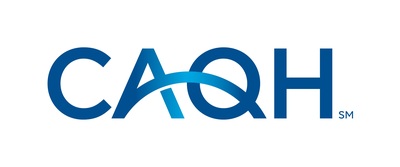CAQH CORE Study Reveals Five Opportunities to Increase Electronic Exchange of Medical Documentation
84 percent of "attachments" sharing medical information between providers and health plans are exchanged through mail or fax, resulting in administrative inefficiency and delays in patient care
WASHINGTON, May 2, 2019 /PRNewswire/ -- CAQH CORE today released a white paper, "CAQH CORE Report on Attachments: A Bridge to a Fully Automated Future to Share Medical Documentation" on the challenges associated with the exchange of medical information and supplemental documentation used for healthcare administrative transactions. The report identifies five areas to improve processes and accelerate the adoption of electronic attachments.

"The inefficient and manual exchange of attachments has real member consequences," said Lou Ursini, Head IT Program Delivery for Aetna/CVS. "It delays prior authorizations, hinders the transition to value-based payments, and costs plans and providers time and money, along with significant member frustration. We believe this research represents real opportunities for the industry to drive electronic adoption of attachments through operating rules."
The term "attachment" refers to patient-specific medical information or supplemental documentation used to support claim payment, prior authorizations, value-based payments and other administrative transactions. With more than 200 million attachments exchanged annually by providers and health plans for claims alone, a reliable, secure and uniform attachments workflow is essential for the U.S. healthcare system to function efficiently.
Today, however, 84% of attachments are sent manually, and a majority of them are received by health plans with too much, too little or the wrong type of information. One regional health plan participating in the CAQH CORE Attachments Environmental Scan indicated that it takes 792 labor hours, the equivalent of nearly 20 people working full-time, to process the attachments it receives by mail, fax and web portal in the course of just one week.
The CAQH CORE study identifies five opportunity areas to improve the exchange of attachments:
- Workflows: Clear documentation requirements and operating rules will reduce the burdens associated with solicited and unsolicited attachments.
- Data Variability: Electronic data files and uniform datasets will make it easier for health plans to keep attachments linked to associated administrative transactions and enable automated adjudication processes.
- Exchange Mechanisms: Greater adoption of electronic methods will streamline the number of ways attachments are exchanged and reduce reliance on manual methods, such as mail and fax.
- Connectivity, Security and Infrastructure: Uniform communication standards in these areas will make it easier to connect, secure and share data between clinical and administrative systems.
- Resources: Transparent and uniform documentation requirements across the industry will enable the vendor community to develop applications that can interoperate with plans, clearinghouses and other intermediaries to support providers.
Increasing the use of electronic methods for exchanging attachments could have far reaching impacts on the nation's healthcare system. For example, automation could reduce per-transaction costs for the exchange of attachments by over 60 percent. For providers, it would ease administrative burdens related to collection, processing, scanning and storage of documents received by mail. As the designated operating rule authoring entity for attachments by the Secretary of the Department of Health and Human Services, CAQH CORE intends to use the findings from this research to support future operating rule development.
"Given the volume of attachments that are exchanged between payers and providers every day, increasing automation could have a significant impact on the efficiency and effectiveness of our healthcare system," said April Todd, CAQH Senior Vice President, CORE and Explorations. "This white paper explains the challenges associated with electronic adoption and offers a roadmap for development of operating rules to drive industry automation."
Read the white paper: CAQH CORE Report on Attachments: A Bridge to a Fully Automated Future to Share Medical Documentation.
Learn more about how you can get involved by contacting core@caqh.org.
About CAQH CORE
Industry-led, CAQH CORE was formed to drive the creation and adoption of healthcare operating rules that support standards, accelerate interoperability and align administrative and clinical activities among providers, payers and consumers. Today, more than 130 organizations participate in CAQH CORE representing more than 75 percent of insured Americans, including healthcare providers, health plans, vendors, government entities and standard setting organizations. Four phases of CAQH CORE Operating Rules and Certification Test Suites have been issued to date. For more information, visit www.caqhcore.org.
![]() View original content to download multimedia:http://www.prnewswire.com/news-releases/caqh-core-study-reveals-five-opportunities-to-increase-electronic-exchange-of-medical-documentation-300842361.html
View original content to download multimedia:http://www.prnewswire.com/news-releases/caqh-core-study-reveals-five-opportunities-to-increase-electronic-exchange-of-medical-documentation-300842361.html
SOURCE CAQH
